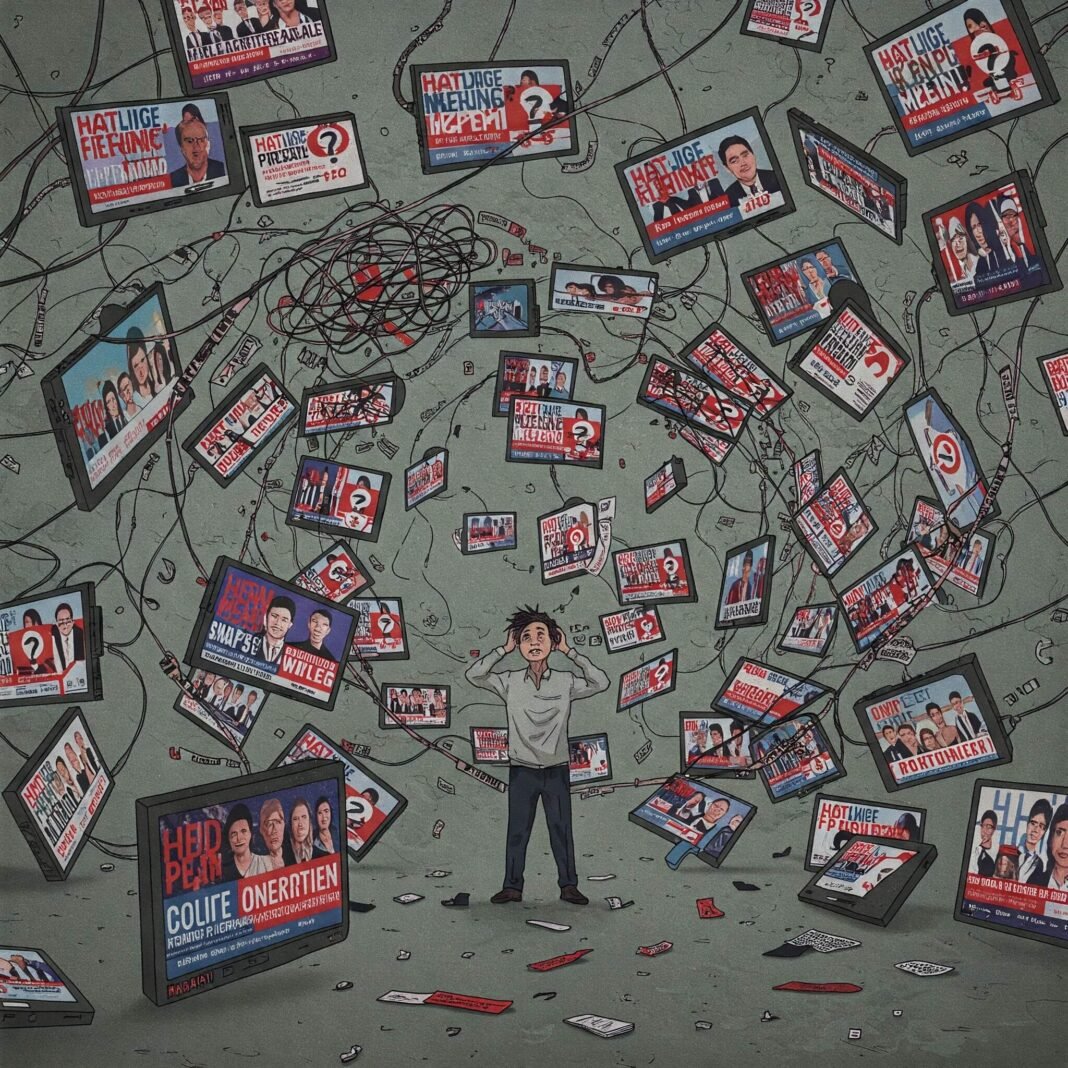Political season. It arrives like a predictable storm, bringing with it a deluge of messages vying for your attention, your vote, and ultimately, your trust. Turn on your TV, scroll through social media, browse websites – they’re everywhere. These are, of course, political ads. And while they are a cornerstone of modern campaigns, there’s a growing, uncomfortable truth many of us feel instinctively: Political Ads You Can’t Trust.
But why exactly can’t you trust them? It’s not just a cynical feeling; there are fundamental reasons rooted in their nature, their goals, and the platforms they inhabit. Understanding these reasons is crucial for navigating the complex information landscape of an election cycle. This post will dive deep into the mechanics behind why political advertising often falls short on truthfulness and equip you with the knowledge to spot the misleading tactics yourself.
The Fundamental Nature of Political Advertising: Why Trust is Elusive
At its core, a political ad is not a news report or a documentary. It’s a piece of persuasive communication designed with a singular purpose: to influence your political opinion or behavior. This inherent goal immediately sets it apart from factual reporting and introduces a bias that makes complete trustworthiness difficult. Unlike commercial advertising, which often faces stricter regulations regarding factual claims about products or services (think ‘contains 100% juice’ vs. ‘candidate X will ruin the economy’), political speech in many places enjoys broader protections. This regulatory gap allows for more leeway in messaging.
Think about it: a company can’t legally lie about the ingredients in your food. But a political campaign can make sweeping claims about their opponent’s past or future policies with less fear of formal repercussion for factual inaccuracy in the ad itself.
Emotional Appeals Often Trump Factual Accuracy
One of the most common reasons political ads you can’t trust is their heavy reliance on emotional appeals rather than presenting balanced, factual arguments. Campaign strategists know that stirring feelings – hope, fear, anger, patriotism – can be far more effective in motivating voters than presenting complex policy details.
These ads often employ dramatic music, evocative imagery, and powerful storytelling to create an emotional connection or reaction. While emotions are a natural part of the human experience, when they are used to manipulate rather than inform, the line between persuasion and deception blurs. An ad showing a sad child to argue against an opponent’s policy on education might be emotionally powerful, but it doesn’t provide factual data on the policy’s actual impact.
Simplification of Complex Issues Leads to Distortion
Political issues are rarely black and white. Healthcare reform, economic policy, foreign relations – these involve intricate details, trade-offs, and varying perspectives. Political ads, by their very nature, need to be short, punchy, and memorable. This necessity for brevity forces campaigns to drastically simplify complex issues.
This simplification often results in overstatements, taking quotes out of context, or presenting a single piece of data as the whole story. While simplifying can make issues more accessible, it often strips away essential nuance, leading to a distorted or incomplete understanding. It’s another key reason why political ads you can’t trust to give you the full picture.
Common Tactics Behind Political Ads You Can’t Trust
Beyond the fundamental nature of political communication, campaigns employ specific techniques designed to persuade, which can often involve stretching the truth or outright misleading viewers. Recognizing these tactics is your first line of defense.
Misinformation and Disinformation Campaigns
These terms are often used interchangeably, but there’s a crucial difference.
- Misinformation: Incorrect or misleading information shared without intent to deceive. Someone might genuinely believe a false claim and share it.
- Disinformation: Incorrect or misleading information intentionally created and spread to deceive people.
Both are rampant in political advertising. Disinformation is particularly insidious because it is a deliberate attempt to manipulate public opinion based on falsehoods. This can involve creating fake news stories, doctoring images, or spreading unsubstantiated rumors about an opponent.

Selective Truths: Cherry-Picking Data and Facts
Numbers and facts seem objective, but how they are presented matters immensely. Political ads you can’t trust often engage in “cherry-picking” – selecting only the data that supports their narrative while ignoring contradictory evidence or context.
For example, an ad might cite a statistic showing unemployment went up during an opponent’s term, without mentioning a global recession that caused job losses worldwide, or the fact that unemployment later dropped significantly. The statistic itself might be true, but its presentation is deeply misleading because it omits crucial context.
Deepfakes and Manipulated Media
The rise of sophisticated digital manipulation tools has added a terrifying new dimension to untrustworthy political ads. Deepfakes – hyper-realistic fabricated videos or audio clips – can make it appear as though a candidate said or did something they never did. While not yet commonplace in mainstream broadcast ads due to potential backlash, the technology is advancing rapidly and poses a significant threat, especially in online spaces. Even less sophisticated manipulation, like editing together snippets of different speeches to create a misleading statement, is common.
Attack Ads Focused Solely on Negativity
Negative advertising has been a staple of politics for decades. Attack ads focus on highlighting the perceived flaws, failures, or controversial stances of an opponent. While legitimate criticism is part of healthy debate, attack ads often veer into hyperbole, personal attacks, or outright falsehoods.
The goal of an attack ad is often to decrease support for the opponent rather than increase support for the candidate running the ad. Because they focus on tearing down rather than building up, they frequently rely on exaggeration and negative framing, contributing heavily to why political ads you can’t trust implicitly.
The Digital Landscape: Amplifying Untrustworthy Political Ads
The internet and social media have revolutionized political campaigning, but they’ve also created fertile ground for misleading advertising to spread rapidly and targeted precision.
Microtargeting and Echo Chambers
Digital platforms allow campaigns to target specific demographics with tailored messages. While this can be used for legitimate purposes (e.g., reaching out to voters interested in healthcare), it also enables microtargeting with potentially misleading information that is shown only to a narrow group, making it harder for the claims to be fact-checked or challenged publicly. This can create echo chambers where people are only exposed to information that confirms their existing biases, regardless of its accuracy.

Lack of Transparency on Platforms
While some platforms are improving, transparency around online political advertising has historically been poor. It can be difficult to determine who is paying for an ad, whether foreign entities are involved, or how widely a specific misleading ad is being shown. This opacity makes accountability challenging.
The Speed and Spread of Falsehoods
False or misleading information tends to spread much faster online than accurate information. Sensational or emotionally charged claims grab attention and are shared quickly, often outrunning the efforts of fact-checkers. This rapid dissemination means a deceptive political ad can reach millions before it’s debunked, and the debunking often doesn’t reach the same audience as the original falsehood.
How to Navigate and Identify Political Ads You Can’t Trust
Given the pervasive nature of untrustworthy political advertising, developing a critical eye is essential. Here are actionable steps you can take:
- Check the Source: Who is running the ad? Is it the candidate’s official campaign, a political party, or an independent “PAC” (Political Action Committee)? Understanding the source’s agenda is the first step. Look for the “Paid for by…” disclaimer.
- Look for Evidence: Does the ad make specific claims? Does it cite sources? If it presents statistics or facts, can you easily verify them? Be skeptical of claims that sound too good or too bad to be true without supporting evidence.
- Be Wary of Emotional Triggers: Is the ad primarily trying to make you feel angry, scared, or overjoyed? While emotions are part of politics, let your critical thinking temper emotional responses. Ask yourself: Why is this ad trying to make me feel this way? What facts are they not showing me?
- Cross-Reference Information: If an ad makes a significant claim, especially about an opponent, don’t take it at face value. Check reputable, non-partisan news sources and fact-checking websites (like Snopes, PolitiFact, FactCheck.org) to see if the claim holds up.
- [Link Placeholder 1: Link to a major fact-checking website like PolitiFact or FactCheck.org]
- Understand the Ad’s Goal: Remember, the primary goal is persuasion, not objective information. Approach every political ad as a sales pitch, not a news report.

The Real Cost of Untrustworthy Political Ads
The impact of misleading political advertising goes far beyond just annoying commercials. It has tangible negative consequences for individuals and democracy itself.
- Voter Confusion: Untrustworthy ads make it incredibly difficult for voters to make informed decisions. When faced with conflicting and often false claims, voters can become confused, disillusioned, or simply disengage from the political process.
- Erosion of Trust in Institutions: A constant barrage of misleading ads, coupled with the spread of misinformation online, erodes public trust not only in politicians and campaigns but also in the media and the electoral process itself. This widespread distrust weakens the foundations of democratic society.
- Polarization: Untruthful ads often employ divisive language and amplify partisan divides. By presenting distorted views of opponents and issues, they contribute to increased polarization and make constructive dialogue and compromise more challenging.
Moving Forward: What We Can Do About Political Ads You Can’t Trust
Addressing the problem of untrustworthy political ads requires a multi-pronged approach involving platforms, regulators, campaigns, and citizens.
- Demand Transparency: Push for greater transparency from social media platforms and broadcasters about who is paying for political ads and who they are targeting. Knowing the source is fundamental to evaluating credibility.
- Support Fact-Checking Initiatives: Organizations dedicated to fact-checking play a vital role. Support their work and rely on them as resources to verify claims made in political advertising.
- Prioritize Media Literacy Education: Educating ourselves and future generations on how to critically evaluate information, recognize bias, and identify manipulative tactics is perhaps the most powerful tool we have against untrustworthy content in all its forms, including political ads. Understand how algorithms work and how they can feed you biased information.




